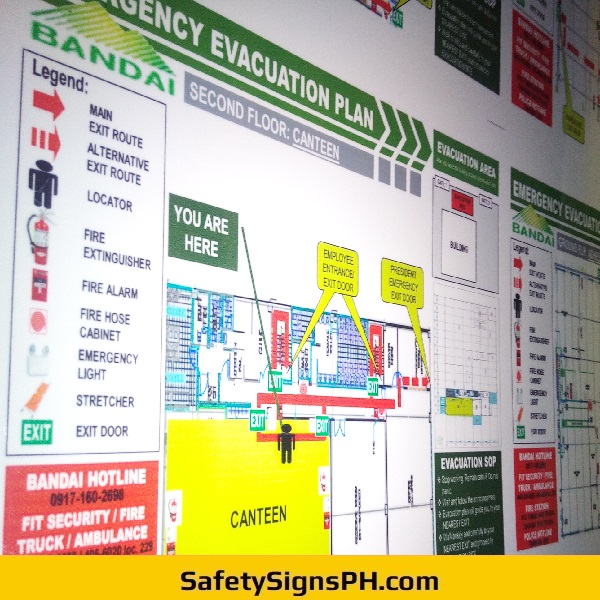   |
| Photoluminescent evacuation plans emerge as a vital, yet often overlooked, component of building safety, offering a reliable and potentially life-saving solution during emergencies, particularly when power outages render conventional lighting systems useless. Photoluminescent evacuation plans, also known as glow-in-the-dark escape route maps, are meticulously designed diagrams displayed within buildings, illustrating the safest and most efficient routes to exit in the event of an emergency. What sets them apart is their ability to absorb ambient light during normal conditions and emit that stored energy as visible light in darkness, providing a clear and continuous guide even when regular lighting fails. This feature is particularly critical in the Philippines, where power outages are a frequent consequence of natural disasters, leaving individuals trapped in darkened environments with limited visibility and heightened panic. The importance of photoluminescent evacuation plans in the Philippines stems from several key factors. Firstly, they provide immediate and reliable guidance during power outages. Unlike battery-operated emergency lights, which can fail due to maintenance issues or depleted batteries, photoluminescent plans operate passively, requiring no external power source. This guarantees consistent illumination, allowing occupants to quickly and safely navigate to designated escape routes, stairwells, and assembly areas, even amidst the chaos and darkness. Secondly, these plans enhance visibility and reduce confusion, especially in unfamiliar environments. During emergencies, people often experience disorientation and heightened stress, making it difficult to remember exit routes. The clear, illuminated pathways provided by photoluminescent plans offer a readily understandable visual guide, minimizing confusion and ensuring a more orderly evacuation process. This is especially beneficial for visitors, disabled individuals, and those who may not be familiar with the building's layout. Furthermore, photoluminescent evacuation plans contribute to a calmer and more efficient evacuation. The visibility offered by these plans helps to mitigate panic and anxiety, allowing individuals to move in a more controlled and organized manner. This can significantly reduce the risk of bottlenecks, stampedes, and injuries during the evacuation, ultimately leading to a faster and safer escape for everyone. Beyond safety, the implementation of glow in the dark evacuation plans in the Philippines demonstrates a commitment to proactive disaster preparedness. It signifies an understanding of the unique challenges posed by the country's geographical location and the importance of investing in reliable, low-maintenance safety solutions. Furthermore, incorporating these plans aligns with international safety standards and best practices, enhancing the reputation of buildings and organizations committed to occupant safety. In conclusion, photoluminescent evacuation plans are not just a mere safety measure; they are a crucial lifeline in the Philippines' disaster-prone environment. By providing reliable, continuous illumination during power outages, enhancing visibility and reducing confusion, and contributing to a calmer and more efficient evacuation process, these plans play a vital role in protecting lives and mitigating the impact of emergencies. Promoting the widespread adoption of photoluminescent evacuation plans across various buildings and establishments throughout the Philippines is a necessary step towards building a more resilient and disaster-prepared nation. It is an investment in safety that can make a significant difference when every second counts during a crisis. Looking for affordable glow in the dark emergency evacuation plans? You have come to the right place! Don't hesitate to contact us today to request a free, no-obligation quotation. Related Product: |
 |





























No Comments yet. Add your Comments now!
Post a Comment